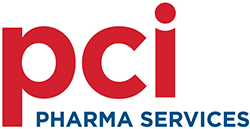As with Tuesday’s presentations, the importance of rigorous safety and risk reduction measures emerged as an overarching theme across exhibitors’ talks. PCI Services’ David O’Connell spoke about the effective containment of APIs within a GMP environment, and David Johnson from GEA Group talked about the hierarchy of control measures used to minimise risk. The day was rounded out with a fascinating discussion on the usage of RABS vs isolators in modern pharmaceutical applications by Matthias Angelmaier from Syntegon Technology, who provided further insight for delegates in a live Q&A session following his presentation.
In addition to these topics, the logistics of real-world commercial manufacturing were explored in Christopher Harrison’s presentation on overcoming scale-up issues, while Sterling’s Sam Brogan spoke about migrating technology to a new facility.
Attendees to David O’Connell’s presentation learned about the overall market growth of HPAPIs and what that growth means for CDMO facilities moving forward. He noted the need for global consistency of both GMP requirements and safe handling guidelines, and the requirement for investment and technical expertise when managing potent materials. An exhaustively detailed explanation of proper processes for these materials followed, including a guide to onboarding, cleaning philosophy, testing and training.
David Johnson discussed a similar topic through the hierarchy of control measures, a system referenced in health and safety legislation in the UK, the US and throughout the EU. At the most effective end of the hierarchy, the complete elimination of hazardous materials is clearly not possible in pharmaceutical applications. Where the industry should focus, David’s presentation demonstrated, is in engineering and administrative controls, in conjunction with PPE for workers. He enumerated a series of machinery and process substitutions that can be made in HPAPI processing to reduce risk.
During Antegon Technology’s presentation, Matthias Angelmaier illuminated the key differences between RABS and isolator systems, and how these differ from a conventional cleanroom. He pointed out that while more ‘open’ systems are suitable for aseptic processing, closed systems are advantageous with regards to high potency materials, as there is a greater degree of physical separation for operators. An interesting trend highlighted by Angelmaier was the growing role of automation in these systems to mitigate the risks associated with the simultaneous growing prevalence of ADCs in pharmaceutical development.
Catalent Nottingham’s Christopher Harrison explained various factors which go into the transition from development to commercialisation in pharmaceuticals. He took listeners through the entire process of drug development from early to late stage, detailing what decisions are made at each clinical phase, through to the documentation required and ultimately the processes needed to scale from R&D to commercial production.
Dr Sam Brogan pulled together many of the day’s themes in her presentation on scaling hazardous chemistry processes. Referencing a Sterling case study, where the company was tasked with producing the hazardous chemical, Diazomethane, at scale, Dr Brogan delivered a comprehensive rundown of the challenges the company had to overcome on the project and the lessons these challenges imparted. She emphasised planning, implementation of specific technical solutions and ongoing optimisation as factors which contributed to the overall success of Sterling’s project.
Throughout the past two days, exhibitors and delegates at MCL have had exciting opportunities to learn and network with some of the industry’s best and brightest. We hope all attendees had an excellent conference and are able to apply the knowledge, technical guidance and wisdom delivered by our exhibitors to their projects moving forward.


